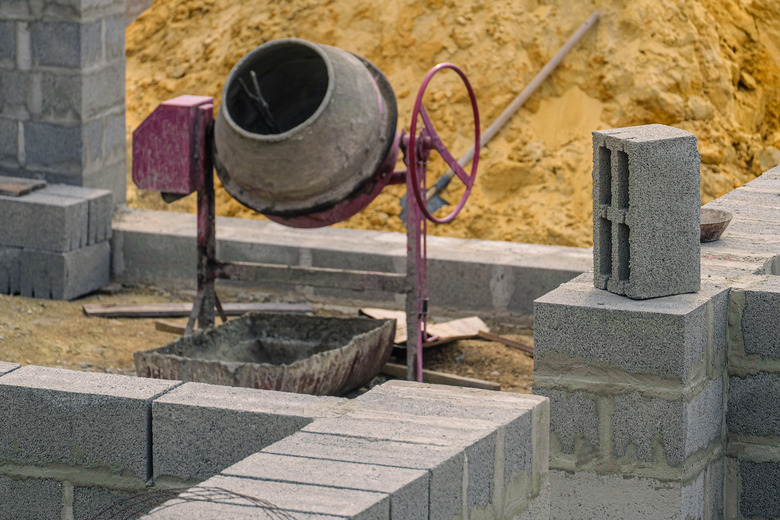What Is A CMU Wall?
We may receive a commission on purchases made from links.
You're likely already familiar with CMU walls without even knowing it. A CMU wall is a wall in which concrete masonry units (CMUs) secured with mortar or interlocked together are the primary construction material. A CMU is any type and style of standard-size concrete blocks of a uniform size.
The current International Building Code states that a concrete block larger than 4 x 4 x 12 inches qualifies as a CMU. If they are smaller than that, you can call them concrete bricks. A concrete block of any size consists of Portland cement and aggregates. A cinder block is the same as a concrete block except that recycled ash or cinders replace some of the aggregates.
Types of CMU Blocks
Types of CMU Blocks
The versatility of CMU blocks in wall construction is due in no small part to the vast number of types and styles available. Though all concrete blocks have similar structural properties, different blocks make up various parts of a single CMU wall. All of the blocks have a specific job to do within the wall. These are the most common CMU types:
- Stretcher blocks are the standard CMUs that make up most of the wall and contain a surface for mortar between each one.
- Corner blocks have a flat side where the block end will be visible at a corner.
- Pillar blocks are similar to stretcher blocks but have flat or smooth ends.
- Jamb and lintel blocks have shapes that allow for the installation of windows or doors and grooves for adding reinforcement.
- Bull nose blocks have at least one corner rounded over for appearance.
- A partition block is thinner than a normal CMU for use in non-load-bearing walls or interiors.
- Other block types have various cut-out sections to accept reinforcing steel, insulation, or other materials.
- Solid concrete blocks come in almost any shape as hollow blocks but don't have a hollow space.
CMU Wall Structures
CMU Wall Structures
CMU walls are everywhere. Foundation and basement walls, exterior walls, load-bearing walls, interior walls, landscape retaining walls, and even decorative accent walls are all excellent examples of CMU walls.
CMUs are larger than bricks and more durable than wood, making a CMU wall faster to build and longer lasting than other types of walls. Concrete's incredible compression strength also makes CMU walls perfect for bearing heavy loads above, though they may be much thicker.
Despite the tendency for water to soak into CMUs, producing them with water-resistant materials or coating them with sealants minimizes the problem.
Building a CMU Wall
Building a CMU Wall
An effective CMU wall, whether indoors or out, requires that the blocks connect with mason mortar or interlock to form a wall. There are numerous methods of interlocking CMUs together for use in retaining walls. Plan carefully to determine how many blocks of each type you'll need.
A CMU wall needs a solid foundation. For a basement wall, a concrete foundation is necessary under the wall. For a landscaping wall, compacted gravel and sand do the job. Lay one block at a time, connecting them with mortar to complete the first row. Apply mortar to the blocks below to join each subsequent row. Create spaces for windows and doors with jamb and lintel blocks as you go.
